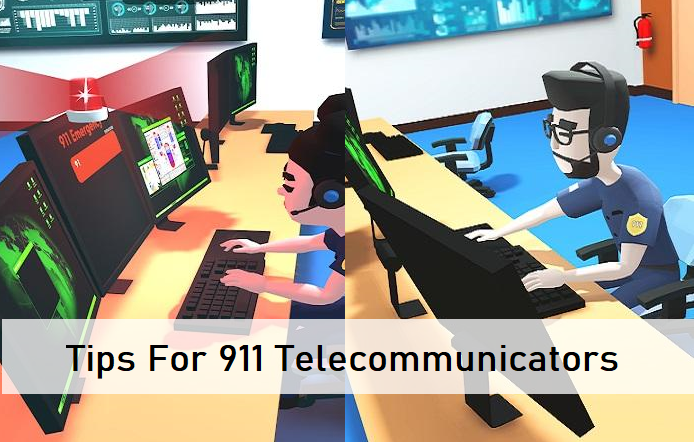Recommended Training Tips for 911 Telecommunicators
The 911 environment is rapidly changing as any PSAP professional can tell you. Long gone are the days when a 911-training program can begin and finish in five to six weeks.
Training needs are arising to address the technology that has expanded the seemingly simple call to 911 from landline phones to mobile phones, text-to-911, and now video. Amid the flood of technology, PTSD was identified as a real and growing concern for telecommunicators. The tools to help them understand and manage it continues to be on the forefront of interpersonal training needs. In addition, the ever-expanding job requirements that Telecommunicators are faced with puts liability on the PSAPs to make sure training needs are continuously reviewed.
PSAP Directors, Managers, Supervisors, and Telecommunicators must be aware of the wide variety of challenges and scrutinization facing them legally and by the communities that they serve. The Best Practices for minimum training guidelines recommended by the National Emergency Number Association (NENA) include a wide variety of areas with additional topics to consider.
The list established by NENA (below) was established to provide Telecommunicators with basic core competencies. Continuation of training throughout a Telecommunicator’s career will strengthen the foundation and provide the basis for solid professional growth. Classroom training has also changed throughout the years. While in-person training is not gone forever, the benefits of virtual training have not gone unnoticed on the budgets of the PSAPs. Matching the list with available virtual training offered by Equature can help decrease the expense of training for employees while still offering a quality training product.
Roles and Responsibilities
- Introduction, Mission, Terminology
- Public Safety Team
- Ethics, Professionalism, Values, Personal Conduct, Image
- Policies, Procedures, Rules, Regulations
- Duties and Responsibilities
- Communities and Agencies Served
- Responder Safety
Legal Concepts
- Liability, Confidentiality, Negligence, Duty
- Law Enforcement Agencies
- Fire/Rescue Agencies
- EMS Agencies
- Public Safety Communications Agencies
- Documentation, Freedom of Information Act (FOIA), Recording, and Records Retention
- Privacy Laws
Interpersonal Communications
- Communications Techniques
- Information Processing, Communication Cycle
- Problem Solving, Critical Thinking
- Customer Service
- Diversity/Demographics
- Non-Native-Language Callers
- Communication-Impaired callers
Emergency Communications Technology
- Telephony Technologies (e.g., PBX/MLTS/VoIP)
- Basic 9-1-1 and Enhanced 9-1-1
- Automatic Number Identification (ANI)/Automatic Location Identification (ALI)
- Wireless Phase I and Phase II
- Next Generation 9-1-1 (NG9-1-1)
- TDD/TTY/TRS
- Text to 9-1-1
- Telematics
- Computerized Mapping/Geographic Information Systems (GIS)
- Logging Recorders
- Computer-Aided Dispatch (CAD) Systems
- Mobile Data Systems, Automatic Vehicle Location (AVL), Paging, Alarms, etc.
- Call Transfers, Alternate and Default Routing, etc.
- Mass Notification
- Security Breaches, Cybersecurity Threats
Call Processing
- Call Receiving
- Interviewing/Interrogation Techniques
- Controlling the Call
- Managing High-Risk Calls
- Managing Specialty Calls
- Call Categorization/Prioritization
- Homeland Security/Terrorism/Weapons of Mass Destruction (WMD)
- Aircraft/Rail Incidents/Marine
- Hazardous Materials Incidents
- Missing/Exploited/Trafficked Persons
- Fire Service Overview
- Fire Service Call Processing
- Fire Service Dispatching
- EMS Overview/ EMS Call Processing /EMS Call Dispatching
- Structured Call-Taking Protocols and Standards Overview
- Law Enforcement Overview/ Law Enforcement Call Processing/ Law Enforcement Dispatching
- Responder-Initiated Calls
- Special-Needs Callers
Emergency Management
- Introduction to Incident Command System (ICS)
- National Incident Management System (NIMS)
- Emergency Management Roles and Responsibilities
- Disaster Preparedness
- Mutual-Aid/Telecommunicator Emergency Response Taskforce (TERT)
Radio Communication
- Radio Communication Techniques
- Radio Technology and Equipment
- Rationale for Radio Procedures and Protocols
- Radio Discipline
- Federal Communications Commission (FCC) Rules
Stress Management
- Definition, Causation, Identification
- Strategies for Dealing with Stress
- Management of Critical Incident Stress
Quality Assurance
- Quality Assurance (QA)/Quality Control (QC)/Quality Improvement (QI)
- DOR/Skills Performance Testing/Performance Standards
- Identify Trends from QA to Address in Continuing Education/In-Service for QI
On-The-Job-Training
- Agency and Departmental Policies and Procedures
- Agency and Departmental Information Technologies Operations
- Interagency Networks and Databases Console Systems and Equipment
- Structure of Local Governance
- National Crime Information Center (NCIC)
- National Law Enforcement Telecommunications System (NLETS)
- Governmental and Private Resources, Media/Information Dissemination
- Geography/GIS
- Media/ Information Dissemination
- Documentation, FOIA Requirements, Recording, and Records Retention
- Call-Tracing and Records-Retrieval Procedures
- Records Management Systems (RMS)
- Roles of Federal Government Resources


Recent Comments